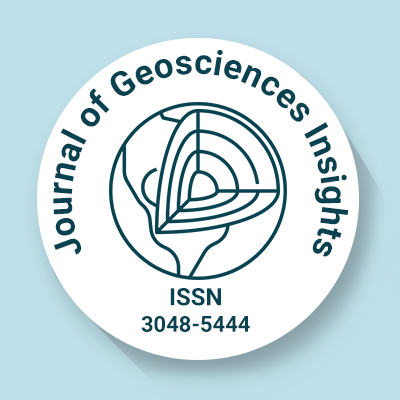
Journal of Geosciences Insights
OPEN ACCESS

OPEN ACCESS
.jpg)
The objective of this study was to assess the physicochemical characteristics and overall quality of groundwater and its suitability for both drinking and irrigation. Thirty- ve groundwater samples were collected from wells and analyzed for key parameters, including pH, electrical conductivity (EC), total dissolved solids (TDS), total alkalinity (TA), total hardness (TH), and major ions (Ca²?, Mg²?, Na?, K?, HCO ?, Cl?, SO ²?, and Fe). The results revealed slightly alkaline pH levels while EC and TDS levels indicated slight salinity, with Handa's classi cation showing suitability for domestic and agricultural use despite over 50% of samples having medium salinity and the rest exhibiting high but permissible salinity levels. The water is predominantly hard to very hard, with calcium and bicarbonate as the dominant ions, re ecting the in uence of carbonate weathering. Statistical and geochemical analyses, including Piper and Gibbs diagrams, con rm that rock weathering is the primary factor governing groundwater chemistry, with minimal anthropogenic impact reveal that most samples are suitable for irrigation, though localized areas with higher salinity require careful management. The Water Quality Index (WQI) value of 27.70 classi es the water as good for domestic consumption, and most samples meet WHO and BIS standards except for elevated iron levels in several sites, which require treatment to ensure safe consumption. This study highlights the need for continuous monitoring and localized mitigation strategies to address issues like high salinity, hardness, and iron concentrations, ensuring the region's sustainable use of groundwater resources.